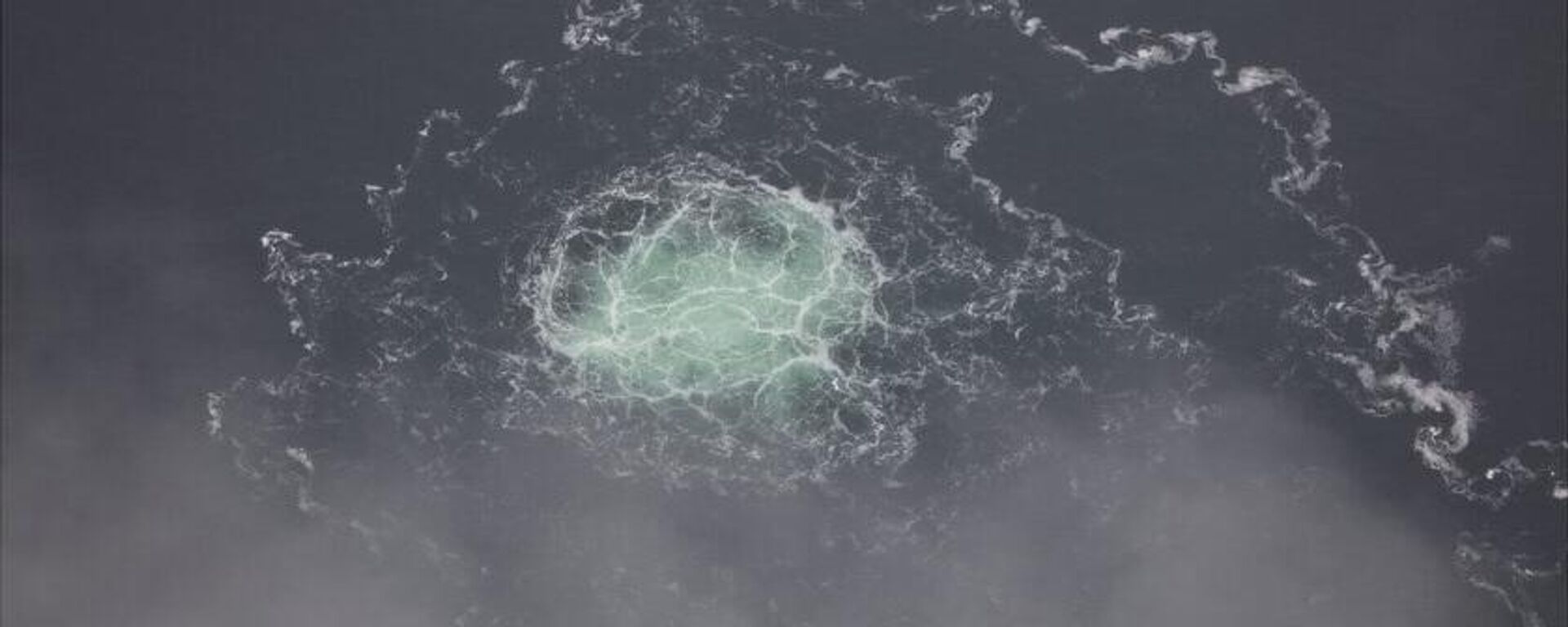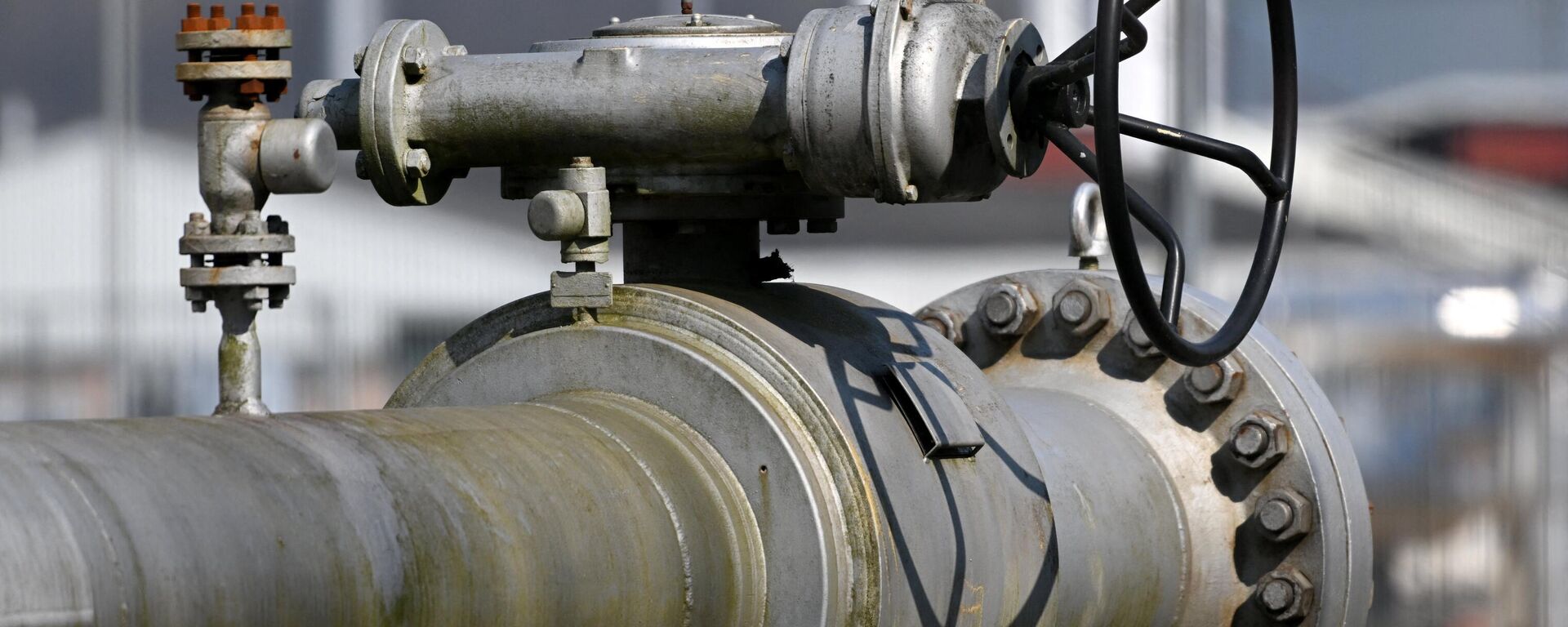https://sputnikglobe.com/20221003/moscow-catches-blinken-letting-slip-us-motive-for-sabotaging-nord-stream-1101470125.html
Moscow Catches Blinken Letting Slip US Motive for Sabotaging Nord Stream
Moscow Catches Blinken Letting Slip US Motive for Sabotaging Nord Stream
Sputnik International
Nord Stream 1 and 2 suffered fuel leaks after experiencing rapid pressure drops last Monday, with Moscow deeming the incidents acts of sabotage and... 03.10.2022, Sputnik International
2022-10-03T13:58+0000
2022-10-03T13:58+0000
2022-10-03T13:58+0000
nord stream sabotage
nord stream
russia
maria zakharova
antony blinken
sabotage
motive
https://cdn1.img.sputnikglobe.com/img/07e6/05/04/1095271576_0:0:3072:1728_1920x0_80_0_0_57a1b5ed6195c617de7e9219833fbd63.jpg
Russian Foreign Ministry spokeswoman Maria Zakharova has caught US Secretary Antony Blinken letting slip the possible motive for Washington to sabotage the Nord Stream pipelines.Citing a press conference in Washington, DC that Blinken held with his Canadian counterpart Melanie Joly on September 30, Zakharova suggested that the US top diplomat “openly, without any embarrassment, spoke about the motives the US and its NATO partners have” for disrupting the Russian infrastructure.In the presser, when asked about the consequences Europe would face if the Nord Stream network was permanently taken offline, Blinken assured that the United States has significantly increased its liquefied natural gas (LNG) production and improved availability for buyers in Europe.The diplomat characterized the Nord Stream crisis as an “opportunity,” rather than the economic and social disaster that it’s shaping up to be for countries across the European region.“Drop curtain,” Zakharova quipped in response.The Russian Foreign Ministry spokeswoman also dismissed Blinken’s allegations about Russia’s supposed “weaponization of energy.”“Russia has never used energy as a weapon. Russia and the USSR before it simply supplied gas to Europe. Uninterrupted. For fifty years. Washington’s lies only confirm its criminal manipulation of the subject,” she emphasized.Gas WarsThe suspected sabotage of Nord Stream 1 and 2 comes amid growing fears inside the European Union that the United States is trying to take advantage of the dramatic downturn energy deliveries from Russia to push its more expensive LNP on its allies.Last month, a study by German gas industry association Zukunft Gas by Cologne University’s Energy Economics Institute calculated that without Russian gas, the United States could take up to 40 percent of the European gas market. The study expects gas prices to remain 400 percent above their pre-crisis levels as late as 2026, and to come down to 2018 levels only by 2030. Even then, this will be possible only if European nations reduce consumption by 20 percent by finding efficiencies and alternative sources of energy, according to the institute.In the wake of the escalation of the Ukrainian crisis this past spring, Moscow has repeatedly expressed its readiness to continue selling Russian energy resources to its partners – including long-term gas contracts priced in rubles to unfriendly powers. President Putin characterized European efforts to cut themselves off from Russian energy as “suicidal,” and accused the United States of coercing Brussels to stop buying Russian gas so that Us energy companies could sell it to their ‘allies’ “for three times the price.” As recently as late last month, the Russian president emphasized that Russia would be able to turn on Nord Stream 1 and 2 “tomorrow” if European countries dropped sanctions which were preventing their maintenance and operation. Last Friday, commenting on the sabotage attacks against the pipelines, Putin charged the “Anglo-Saxons” with causing the explosions to “destroy Europe’s entire energy infrastructure.”Gas Infrastructure Europe (GIE), an association of European gas infrastructure operators, indicated on Sunday that gas offtake from underground gas storage sites had exceeded gas being put in for the first time since spring, and indicated that reserves are presently filled to 87.83 percent capacity, or 95 billion cubic meters of gas.On Monday, the International Energy Agency warned that the storage facilities would drop to 5 percent full by February if Russian supplies were cut off and deliveries of LNG remain limited.Before the sabotage, Nord Stream 1 and 2 had the capacity to pump up to 110 billion cubic meters of gas per year (cu3/yr) from Russia to Germany via the bottom of the Baltic Sea. Russia also operates the Soviet-era Yamal-Europe pipeline, which can normally send up to 33 billion cu3/yr to Poland and Germany via Belarus. However, authorities in Warsaw cut off the flow of the pipeline in the summer and turned it on in reverse flow, thus stripping Europe of another 33 billion cu3/yr in capacity. The Soyuz (‘Union’) is another Soviet-era pipeline, this one with a capacity of 26.1 billion cu3/yr. The pipeline runs through Ukraine, and flows have slowed amid the security crisis in that country. Finally, there is TurkStream, a gas pipeline pumping up to 31.5 billion cu3/yr to Turkey and Southeastern Europe along the bottom of the Black Sea. Until recently, TurkStream has been the most reliable among all of the aforementioned pipelines since the escalation of the Ukrainian crisis. However, late last month, Gazprom warned that Western sanctions were hindering some of the maintenance and repair work on the TurkStream network.
https://sputnikglobe.com/20221003/pressure-in-both-damaged-nord-stream-gas-pipelines-stabilized-no-more-gas-leaks-gazprom-1101459691.html
https://sputnikglobe.com/20221002/germany-may-initiate-own-probe-into-nord-stream-incident-justice-minister-says-1101441929.html
https://sputnikglobe.com/20221002/eu-takes-more-gas-than-puts-in-storage-facilities-operator-1101434192.html
russia
Sputnik International
feedback@sputniknews.com
+74956456601
MIA „Rossiya Segodnya“
2022
News
en_EN
Sputnik International
feedback@sputniknews.com
+74956456601
MIA „Rossiya Segodnya“
Sputnik International
feedback@sputniknews.com
+74956456601
MIA „Rossiya Segodnya“
nord stream, russia, maria zakharova, antony blinken, sabotage, motive
nord stream, russia, maria zakharova, antony blinken, sabotage, motive
Moscow Catches Blinken Letting Slip US Motive for Sabotaging Nord Stream
Nord Stream 1 and 2 suffered fuel leaks after experiencing rapid pressure drops last Monday, with Moscow deeming the incidents acts of sabotage and international terrorism shortly afterward. On Friday, President Putin accused the “Anglo-Saxons” of targeting the pipelines to deliberately destroy Europe’s energy infrastructure.
Russian Foreign Ministry spokeswoman Maria Zakharova has caught US Secretary Antony Blinken letting slip the possible motive for Washington to sabotage the Nord Stream pipelines.
Citing a press conference in Washington, DC that Blinken held with his Canadian counterpart Melanie Joly on September 30, Zakharova
suggested that the US top diplomat “openly, without any embarrassment, spoke about the motives the US and its NATO partners have” for disrupting the Russian infrastructure.
In the presser, when asked about the consequences Europe would face if the Nord Stream network was permanently taken offline, Blinken
assured that the United States has significantly increased its liquefied natural gas (LNG) production and improved availability for buyers in Europe.
“We’re now the leading supplier of LNG to Europe to help compensate for any gas or oil that it’s losing as a result of Russia’s aggression against Ukraine,” Blinken said.
The diplomat characterized the Nord Stream crisis as an “opportunity,” rather than the economic and social disaster that it’s shaping up to be for countries across the European region.
“It’s a tremendous opportunity to once and for all remove the dependence on Russian energy and thus take away from Vladimir Putin the weaponization of energy as a means of advancing his imperial designs. That’s very significant and that offers tremendous strategic opportunity for the years to come,” the secretary said.
“Drop curtain,” Zakharova quipped in response.
The Russian Foreign Ministry spokeswoman also dismissed Blinken’s allegations about Russia’s supposed “weaponization of energy.”
“Russia has never used energy as a weapon. Russia and the USSR before it simply supplied gas to Europe. Uninterrupted. For fifty years. Washington’s lies only confirm its criminal manipulation of the subject,” she emphasized.

3 October 2022, 10:43 GMT
The suspected sabotage of Nord Stream 1 and 2 comes amid growing fears inside the European Union that the United States is trying to take advantage of the dramatic downturn energy deliveries from Russia to push its more expensive LNP on its allies.
Last month, a
study by German gas industry association Zukunft Gas by Cologne University’s Energy Economics Institute calculated that without Russian gas, the United States could take up to 40 percent of the European gas market. The study expects gas prices to remain 400 percent above their pre-crisis levels as late as 2026, and to come down to 2018 levels only by 2030. Even then, this will be possible only if European nations reduce consumption by 20 percent by finding efficiencies and alternative sources of energy, according to the institute.
In the wake of the escalation of the Ukrainian crisis this past spring, Moscow has repeatedly expressed its readiness to continue selling Russian energy resources to its partners – including long-term gas contracts priced in rubles to unfriendly powers. President Putin characterized European efforts to cut themselves off from Russian energy as
“suicidal,” and
accused the United States of coercing Brussels to stop buying Russian gas so that Us energy companies could sell it to their ‘allies’ “for three times the price.” As recently as late last month, the Russian president emphasized that Russia would be able to turn on Nord Stream 1 and 2 “tomorrow” if European countries dropped sanctions which were preventing their maintenance and operation. Last Friday, commenting on the sabotage attacks against the pipelines, Putin
charged the “Anglo-Saxons” with causing the explosions to “destroy Europe’s entire energy infrastructure.”

2 October 2022, 14:30 GMT
Gas Infrastructure Europe (GIE), an association of European gas infrastructure operators,
indicated on Sunday that gas offtake from underground gas storage sites had exceeded gas being put in for the first time since spring, and indicated that reserves are presently filled to 87.83 percent capacity, or 95 billion cubic meters of gas.
On Monday, the International Energy Agency
warned that the storage facilities would drop to 5 percent full by February if Russian supplies were cut off and deliveries of LNG remain limited.
Before the sabotage, Nord Stream 1 and 2 had the capacity to pump up to 110 billion cubic meters of gas per year (cu3/yr) from Russia to Germany via the bottom of the Baltic Sea. Russia also operates the Soviet-era Yamal-Europe pipeline, which can normally send up to 33 billion cu3/yr to Poland and Germany via Belarus. However, authorities in Warsaw cut off the flow of the pipeline in the summer and turned it on in reverse flow, thus stripping Europe of another 33 billion cu3/yr in capacity. The Soyuz (‘Union’) is another Soviet-era pipeline, this one with a capacity of 26.1 billion cu3/yr. The pipeline runs through Ukraine, and flows have slowed amid the security crisis in that country. Finally, there is TurkStream, a gas pipeline pumping up to 31.5 billion cu3/yr to Turkey and Southeastern Europe along the bottom of the Black Sea. Until recently, TurkStream has been the most reliable among all of the aforementioned pipelines since the escalation of the Ukrainian crisis. However, late last month, Gazprom warned that Western sanctions were hindering some of the maintenance and repair work on the TurkStream network.

2 October 2022, 10:31 GMT





